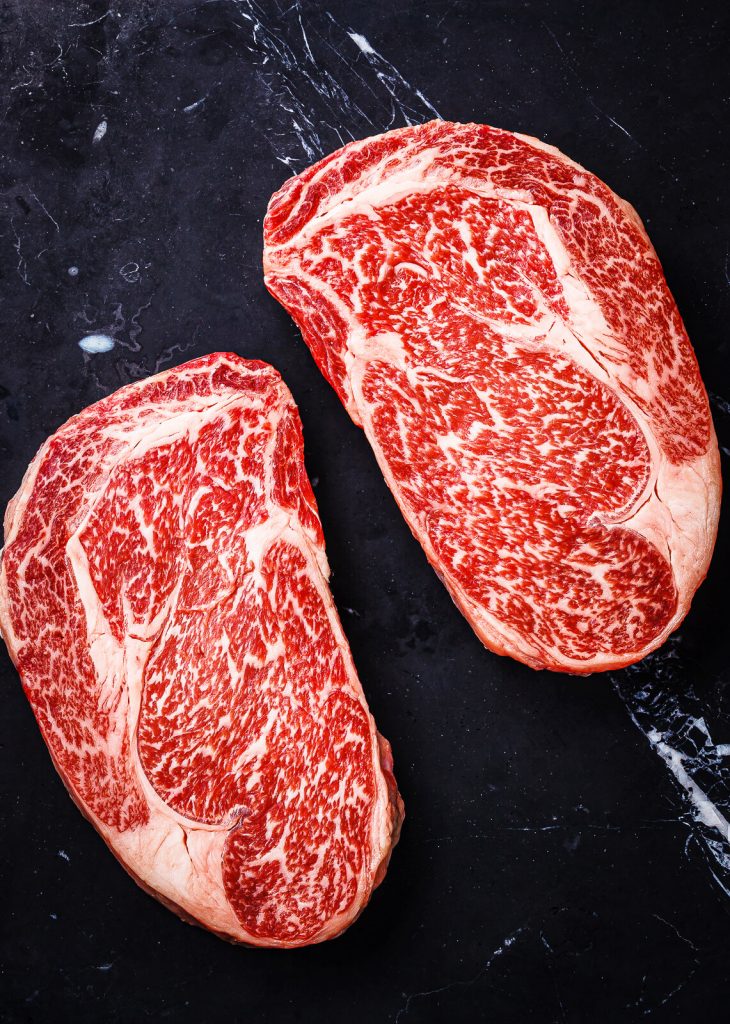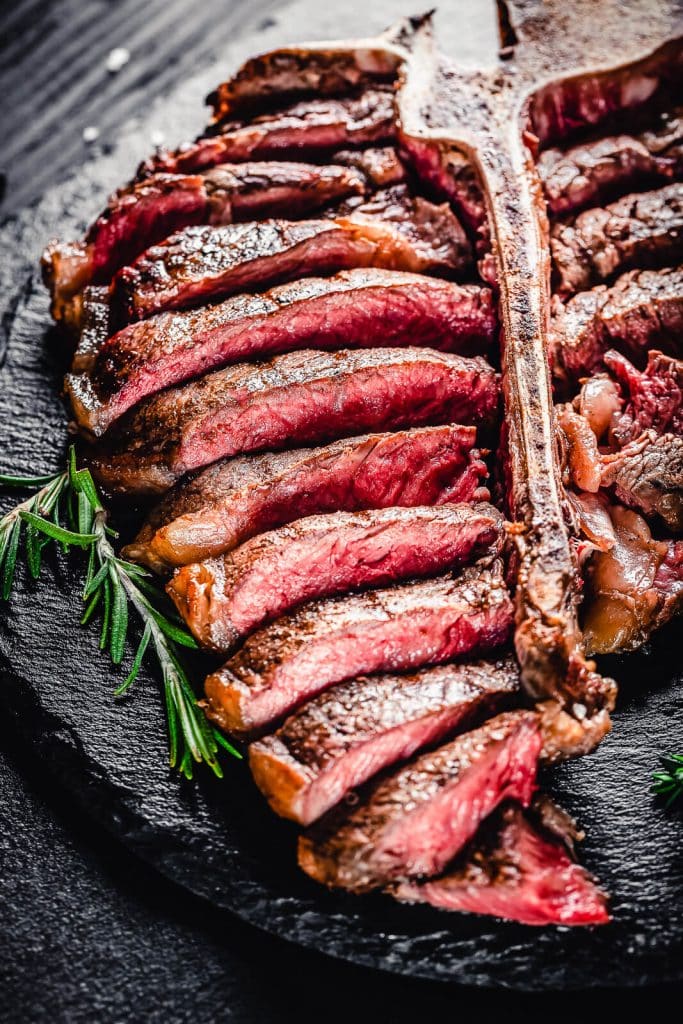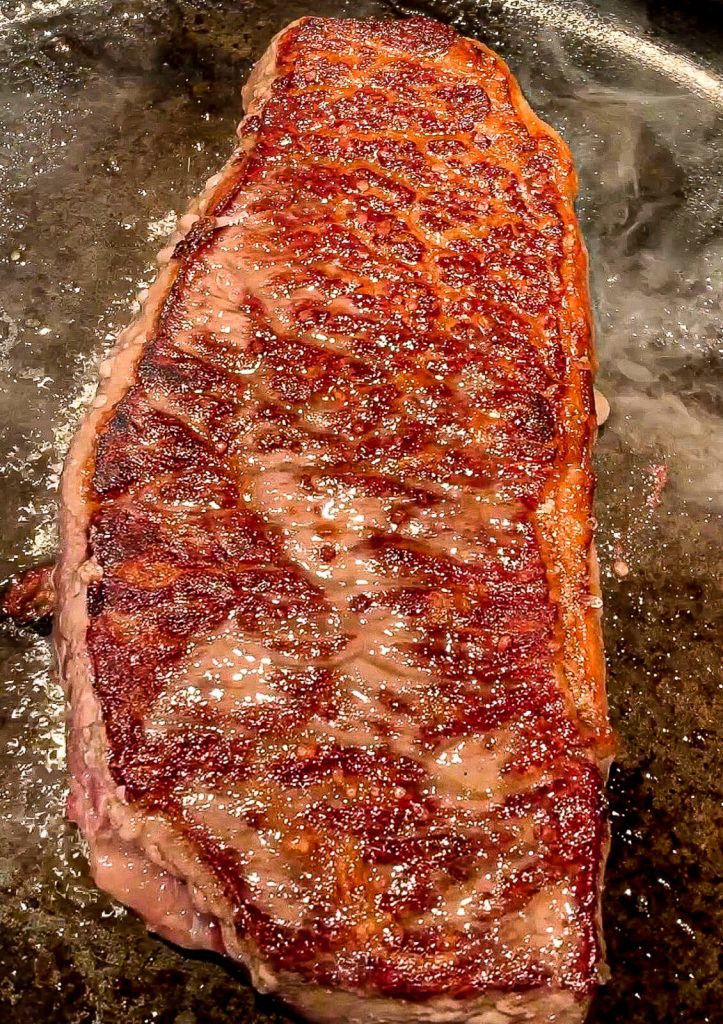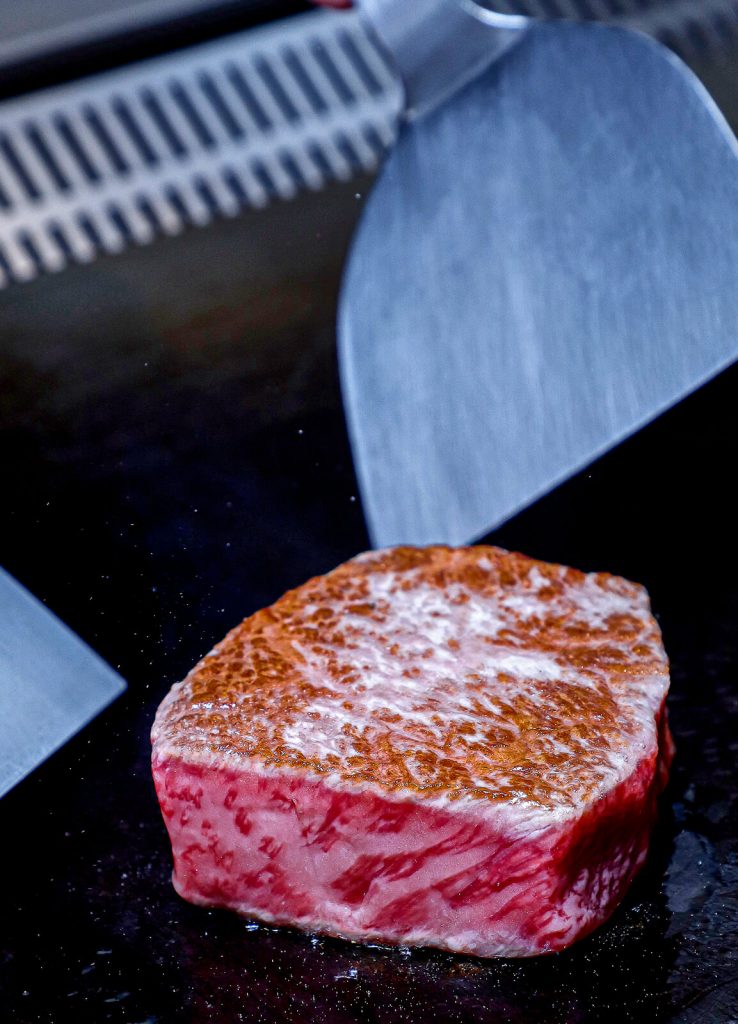If you’re wondering how to cook wagyu steak, you’ve come to the right place. Some folks are into cars, some are into jewelry, others may even cherish a beautiful painting. For me, there’s not much prettier than the abundance of intramuscular fat (marbling) contained in wagyu beef. That my friends, is a show stopper.
Today we’re going to talk about the best way to cook wagyu steak. And….you ready for this? I don’t recommend grilling it. Well, mostly anyway. More on this later.

How To Prep a Wagyu Steak
I always recommend taking a wagyu steak out of the refrigerator an hour or so before cooking it. By bringing the wagyu steak up to room temperature you’re creating the best possible scenario for it to cook evenly.

If the center of the steak is refrigerator temperature when it hits the cooking surface, you’re at high risk of having an overcooked outside and undercooked, (cold even) inside of the steak.
Keep in mind, wagyu steak is best consumed on the medium rare side. So, even if you don’t normally like rare beef, rare wagyu just hits different. I promise.

Anyway, I digress, back to the wagyu steak preparation. Letting the meat come up to room temperature is ESPECIALLY important with a thinner cut steak in general, but amplified with a wagyu steak because of the fat content.
That fat needs to be rendered in order to get the best possible flavors. So, getting it up to render temperature quickly, without overcooking it is paramount with a wagyu steak.
Allowing it sit at room temperature before cooking it helps with that. Not to worry, the process is very simple.
Is It Better To Grill or Pan Sear Wagyu Steak?
In a perfect world, you would use both. By that I mean pan sear the steak in a cast iron pan heated on the grill. I don’t recommend putting a wagyu steak directly over the flame on the grill. There’s way too much fat in wagyu beef to grill it without some major flare ups.
Those flare ups are caused by the fat dripping onto the flames and you don’t want to lose any of that amazing wagyu beef fat flavor to your fire. Instead, you want your steak to cook in its own rendered fat.

Can this be done on the stove top? Absolutely, but that brings drawbacks; namely the mess it will create due to the fat popping all over your stove. Add to that, your house is going to smell like a meat candle for a day or so. So, if you can use the grill, I recommend that.
If a grill isn’t an option, a griddle surface can be used as well. Outdoor griddles are very trendy these days and make a great cooking surface for cooking a wagyu steak.

Wagyu GRILLED vs PAN SEARED – Steak Battle!
Should you cook Wagyu on a pan or grill?
Control over the cooking temperature: When cooking on a pan, you have more control over the cooking temperature than you do when cooking on a grill. This is especially important when cooking wagyu, as the high fat content of the meat can cause flare-ups and burning if the heat is too high.
Wagyu beef vs Kobe beef: Which is healthier?
Wagyu beef is native to Japan, known for its unique flavor and tenderness. Besides, wagyu beef has highest amount of conjugated linoleic acid, almost 30% grater than other Moreover, kobe beef is also a type of wagyu beef from the Tajima strain of Japanese black cattle. Both the meats have same nutritional values when compared. However, as red meat has high amounts of saturated fats, their consumption needs to be restricted to only once per week.
Which Wagyu is best for grilling?
Only American Wagyu and Australian Wagyu are suitable for grilling. Another factor to consider when cooking Wagyu is seasoning. With traditional steaks, there are plenty of recommended ways to experiment with flavor, including spices, sauces, rubs, marinades and more. Bolder flavors are often utilized to add a kick to the finished result.
How to cook Wagyu?
You could cook it in a lighter oil like truffle or olive oil. This can enhance the flavor a little bit and shorten the cooking time, which is essential for wagyu. However, the best method of greasing is to trim some fat off of your meat and render it in the pan to use for grease. This greases the pan and enhances the flavor of the beef.
